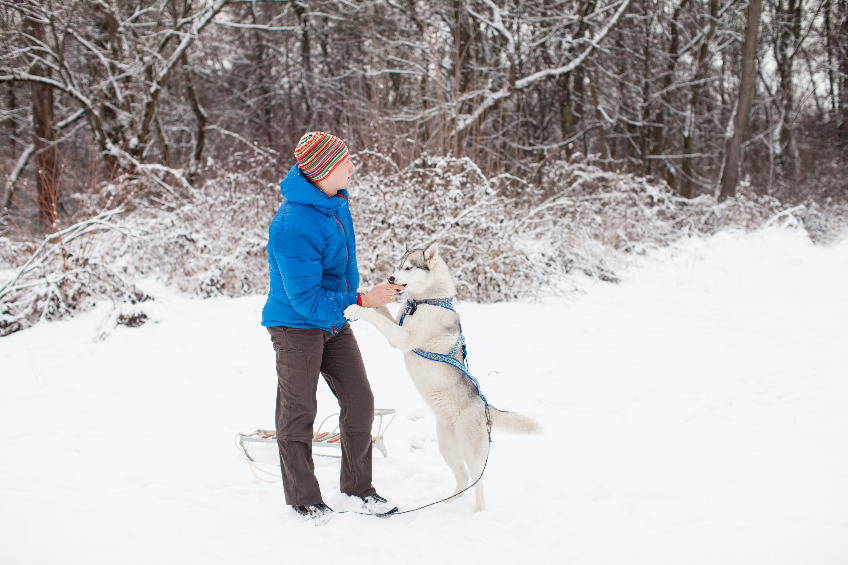Training is the process by which we teach a dog to acquire a specific type of behavior or to develop a series of skills necessary for a balanced relationship with family members and other people.
Training should be non-violent, and regardless of the type chosen, positive reinforcement should be applied in each case.
What is Positive Reinforcement?
Positive reinforcement is based on using a reward.
The first stage is represented by creating a dependence on a stimulus we control, and the dog wants it very much. If the stimulation is ineffective, the dog’s attention will fade over time and may even lose interest entirely. The most used types of reward are food, motivational toys, praise, and encouragement.
Each dog has genetic baggage and a predisposition to stimulation and motivation. For static exercises such as sitting, lying down, or waiting, it is recommended to use food because this type of reward induces a calm state, and the dog’s attention will be more focused on exercise. Food reward is also recommended for walking in the initiation phase.
Initiating and completing movement exercises should be based on using motivating toys. When playing, a dog will have a real explosion of energy, which is exactly what motivational toys stimulate in them. In agility exercises, the best reward is also a motivating toy because the speed of execution is very much appreciated.
According to a dog training Upper West Side professional I know, praise and encouragement also represent strong stimuli for the dog, but this type of reward can prove ineffective in the case of over-spoiled dogs. It is much higher, though, in dogs living outside the house. That’s because it often happens that those dogs that live in the house are permanently in contact with the owner and other people in the family, so praise and encouragement do not represent such a strong stimulus for the dog.

What If the Dog Does Not Cooperate Properly?
Establishing the most strongly motivating stimulus for your dog is important, especially when practicing commands in a crowded environment where distracting factors surround the dog. It is possible for them to execute all the commands learned in a calm and quiet environment. Still, in a crowded environment, they may react like they do not remember anything, and their attention to what the owner asks them to do can be absolutely nil. The reason would be the improper stimulation and treating the creation of the dog’s dependence on stimulation superficially. Not all dogs react the same way.
In the eyes of the dog, the value of the stimulus is significant. If they consider that the reward offered is not very motivating, their attention will be focused on what motivates them the most. If you notice that you cannot control the dog, you must go back a stage and fix the problem.
The use of motivational toys is precious, and that is why the sessions should be short because excessive use can overlap with inevitable boredom over playing with the dog. The association is not a beneficial one. The toy must appear only when practicing the commands, and its presence must be an event. Leaving the toy at the dog’s discretion can induce a lack of interest in it.
Practicing orders should be performed in short sessions of only 15 to 20 minutes, and the sessions can be repeated several times a day.
